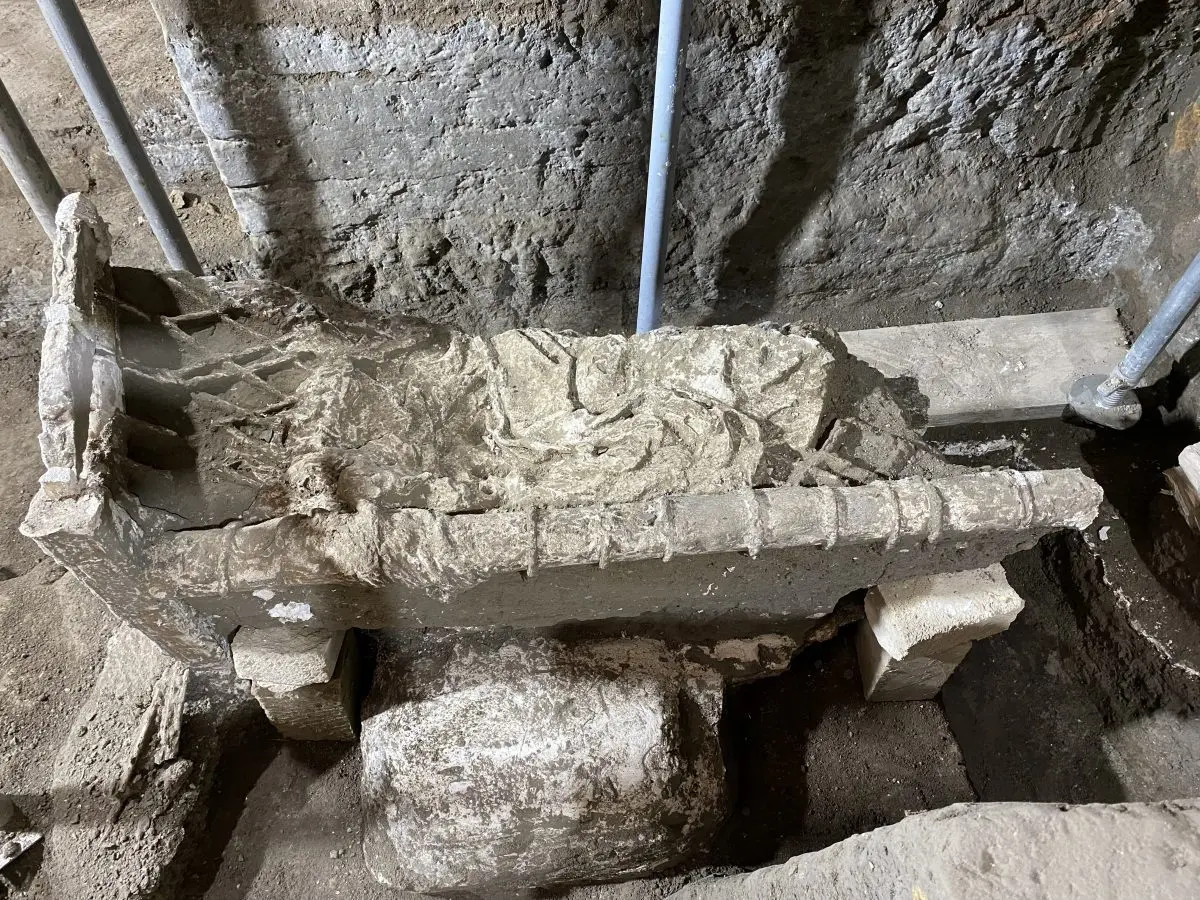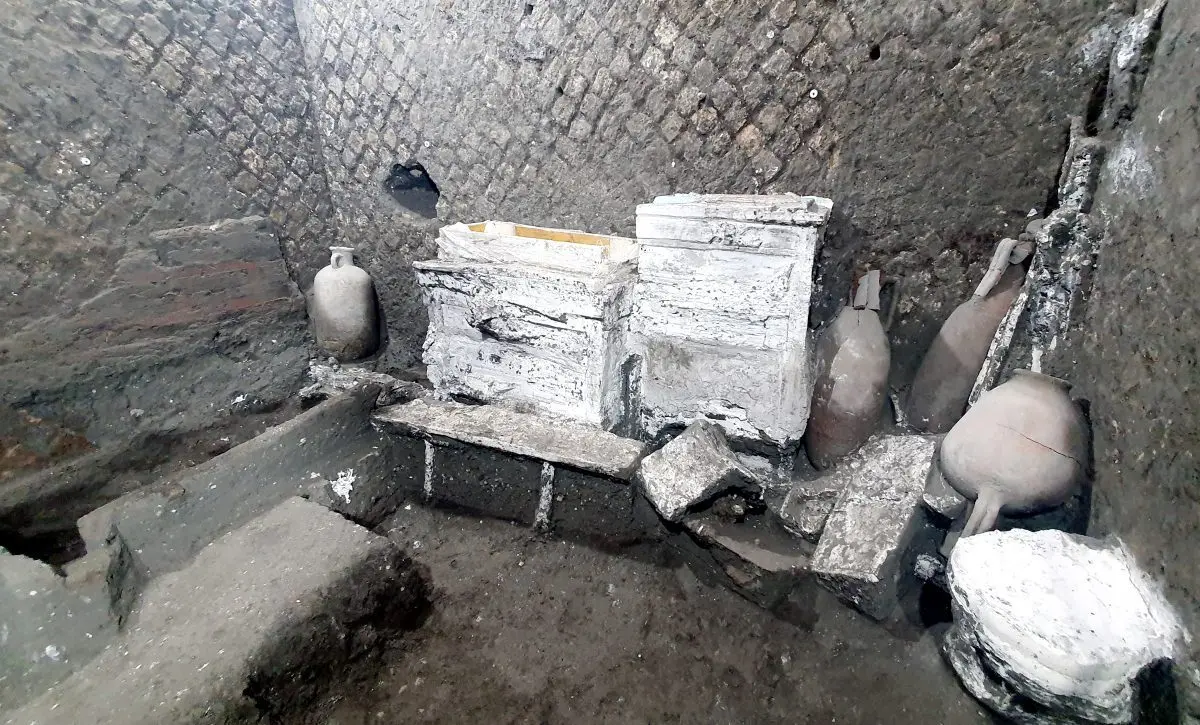Archaeologists have uncovered a second slave room during excavations at the Villa of Civita Giuliana, located 600 metres from the walls of Roman Pompeii.
Pompeii was a Roman city in the modern commune of Pompeii near Naples in the Campania region of Italy. Pompeii, along with the Roman town of Herculaneum, were buried under 4 to 6 metres of volcanic ash and pumice during the eruption of Mount Vesuvius in AD 79.
The Vesuvian eruption spewed forth a deadly cloud of super-heated tephra and gases to a height of 33 km, ejecting molten rock, pulverised pumice, and hot ash at 1.5 million tons per second. The eruption released approximately 100,000 times the thermal energy of the atomic bombings of Hiroshima and Nagasaki during WW2.
In a press announcement by the Pompeii Archaeological Park, archaeologists have found a second slave room designated Room A, in which the researchers used plaster casting to fill in voids left by decomposed organic matter in the volcanic layers that buried the villa.

The team found the imprint remains of furniture and fabrics, as well as the bodies of victims from the eruption. Most notably are the imprints of two beds, one of which had a mattress, and two small cabinets for storing household goods.
Meanwhile, micro excavations of the previously discovered slave room, designated Room C, have revealed ceramic vessels and amphorae, in which the remains of two mice were found in an amphora and the remains of a rat found in a jug..
Exploratory excavations at the Villa of Civita Giuliana first began during the early 20th century, with recent excavations being part of a collaboration between the Archaeological Park of Pompeii and the Public Prosecutor’s Office of Torre Annunziata.
Header Image Credit: POMPEII SITES





